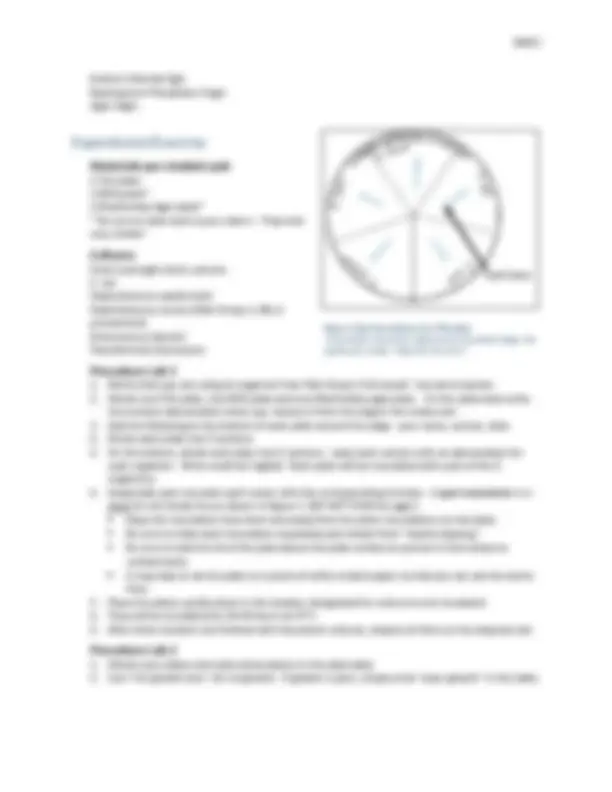






Study with the several resources on Docsity

Earn points by helping other students or get them with a premium plan


Prepare for your exams
Study with the several resources on Docsity

Earn points to download
Earn points by helping other students or get them with a premium plan
Community
Ask the community for help and clear up your study doubts
Discover the best universities in your country according to Docsity users
Free resources
Download our free guides on studying techniques, anxiety management strategies, and thesis advice from Docsity tutors
An overview of selective and differential media in microbiology, their composition, and their role in the identification and isolation of microorganisms. It covers the concepts of all-purpose media, selective media, and differential media, with examples of Mannitol Salt Agar and MacConkey agar. Students will learn about the importance of these media in microbiology and how they aid in the identification of specific microbes.
What you will learn
Typology: Study notes
1 / 8

This page cannot be seen from the preview
Don't miss anything!





The student will Use aseptic techniques in the safe inoculation of various forms of media. Follow oral and written instructions and manage time in the lab efficiently. Apply correct terminology regarding microbiological techniques, instruments, microbial growth, biochemical testing, and media types when making observations. Correctly perform various inoculation techniques and describe each technique’s purpose. Make accurate observations and appropriate interpretations of biochemical test results and use them in the identification of potentially disease causing microbes.
In this course you will encounter many types of growth media. Most of the types, TSA/TSB (Tryptic Soy Agar/Broth) and NA/NB (Nutrient Agar/Broth) for example, are all purpose or general media. They contain a wide variety of complex carbon, nitrogen and sugar compounds. You will often see terms like beef extract, peptone, tryptone, soytone in the list of ingredients. These components are slurries of animal and plant tissue that have been partially hydrolyzed (broken down) so that the components are more readily available. These media contain many different complex molecules, however the exact amount and types of each is unknown. These media will support a wide range of nonfastidious microbes with differing nutritional requirements. Media that inhibit the growth of unwanted microorganisms and support the growth of the organism of interest by supplying nutrients and reducing competition are called selective media. (OpenStax CNX, 2018) Selective media are formulated with inhibitors such as antibiotics or high NaCl concentration. When studying a mixed sample, selective media can be helpful. For example, if you suspect a patient is carrying Salmonella (a pathogenic Gram negative bacillus), you may plate a stool sample on a selective medium containing an antibiotic effective against Gram positive bacteria. By eliminating the Gram positive organisms, the range of organisms growing on the plate will be narrowed to Gram negatives. Thus, the variety of bacteria you will need to study is reduced. The fact that a medium does not grow every microbe, does not make it selective. For example, TSA is an all-purpose medium and a wide range of organisms grow on it. Certain fastidious organisms, however, will fail to grow or grow poorly on TSA because it lacks the specific nutrients required by those bacteria. Even so, TSA is not classified as selective. To be selective, a medium must contain a specific substance intentionally added to inhibit certain microbes and not others. Differential media contain substrates and indicators (often pH indicators) that make a certain biochemical process visible. Differential media allow one to differentiate between types of organisms growing on the plate because each has a distinct appearance based on whether or not it is carrying out a particular biochemical reaction. “Color changes are the result of end products created by interaction of bacterial enzymes with differential substrates in the medium or, in the case of hemolytic reactions, the lysis of red blood cells in the medium” (OpenStax CNX, 2018). Differential media can be used to distinguish between bacteria that can ferment a specific type of sugar and those that cannot or between bacteria that utilize a certain electron acceptor and those that do not. Some media are selective, some are differential and some are both. We will study Mannitol Salt Agar and MacConkey agar as examples.
Mannitol Salt Agar (MSA) can be used to presumptively isolate and identify Staphylococci from human samples. Refer to the compositions of MSA and MacConkey agar below. MSA contains 75 g/L NaCl (7.5%) compared to the 5 g/L found in TSA and other all-purpose media. MSA favors the growth of salt tolerant microbes, namely Staphylococci , because other bacteria from a human sample, are inhibited by the high NaCl component. In addition, to distinguish pathogenic Staphylococci, namely S. aureus from other common Staphylococci, the substrate mannitol (a sugar) and the pH indicator phenol red are added. If the organism ferments mannitol, acids will be produced as byproducts. These acids will lower the pH changing the indicator from pink to yellow. S. aureus can ferment mannitol, while other common Staphylococci found in humans cannot. MacConkey agar contains bile salts and crystal violet, which interfere with the growth of many gram-positive bacteria and favor the growth of gram-negative bacteria, particularly the Enterobacteriaceae. These species, commonly named enterics, reside in the intestine, and are adapted to the presence of bile salts. Enterics can be further characterized by their ability to ferment lactose. In MacConkey agar, the lactose fermenters ( coliforms ) utilize lactose in the medium producing acid, lowering the pH. The medium is supplemented with the pH indicator neutral red, which turns to hot pink at low pH. (OpenStax CNX, 2018) Thus, lactose fermenters are observed as bright pink colonies or with a bright pink halo surrounding the growth. Non-lactose fermenters (noncoliforms) include some notable human pathogens, such as Salmonella spp., Shigella spp., and Yersinia pestis. (OpenStax CNX,
Coliform bacteria are microbes found in the digestive systems of warm-blooded animals, in soil, on plants, and in surface water. (Note their ability to assist mammals in the digestion of milk sugar, lactose.) These microbes typically do not make you sick; however, because microbes that do cause disease are hard to test for in the water, “total coliforms” are tested instead. If the total coliform count is high, then it is very possible that harmful germs like viruses, bacteria, and parasites might also be found in the water. Thus, they are considered one of several a water quality indicators. (U.S. Centers for Disease Control and Prevention, 2019)
Pancreatic digest of Gelatin 17g/L Peptones (meat and Casein) 3g/L Lactose 10g/L Bile Salts 1.5g/L Sodium Chloride 5g/L Agar 13.5g/L Neutral red 0.03g/L Crystal Violet 1mg/L
Pancreatic digest of Casein 5g/L Peptic digest of Animal Tissue 5g/L Beef extract 1g/L Sodium Chloride 75g/L D-Mannitol 10g/L Phenol red 25mg/L Agar 15g/L
Tryptone 17g/L Soytone 3g/L
Lab Report: Selective and Differential Media 1 Name ______________________________ Lab Section __________
Organism Growth on TSA +/- Appearance on TSA Growth on MacC +/- Appearance on MacC Growth on MSA +/- Appearance on MSA
References OpenStax CNX. (2018, Mar 19). OpenStax Microbiology. Retrieved from http://cnx.org/contents/e42bd376-624b-4c0f-972f-e0c57998e765@4. U.S. Centers for Disease Control and Prevention. (2019, June 30). Well Testing. Retrieved from Healthy Water: https://www.cdc.gov/healthywater/drinking/private/wells/testing.html